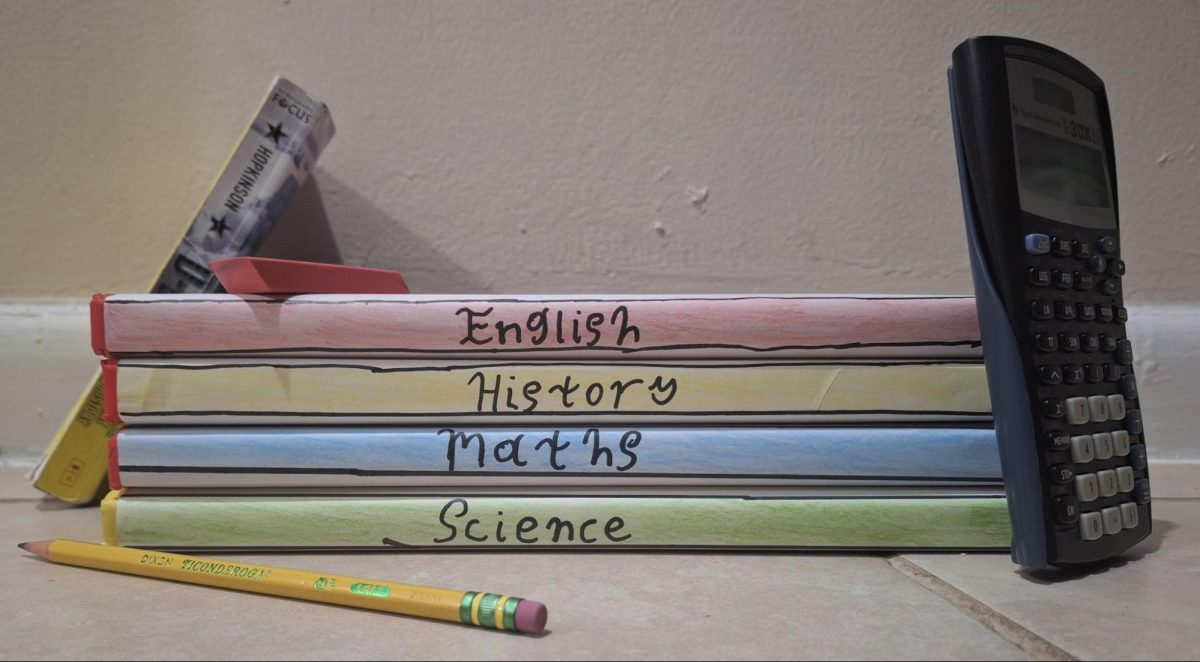Most people take one look at contemporary art pieces and ask themselves, “Anyone could recreate this. How is this considered art?” This reaction is typical, especially because contemporary art features abstract forms and minimalist designs. Earlier this year, actually, there was a trend on TikTok where users would visit museums and record themselves standing next to contemporary artwork they thought they could’ve created themselves. Usually, these pieces stand out due to the fact that they seem simple and easily replicable, but this begs the question—does contemporary art truly lack depth or are we not seeing the full picture?
Traditionally, the public has measured “depth” in art through technical mastery and attention to detail. When the topic of art is brought up, most people tend to picture styles like classical art or realism. These styles both include fine details and patterns in the brushwork that are able to clearly tell a story. Because of this, most are under the impression that in order to properly convey a message through art, it must contain intricate detailing and expert techniques. In other words, many believe that true depth in art can only be achieved through precision and meticulous craftsmanship. The more lifelike or detailed a piece is, the more it’s seen as profound.
Sophomore Aveline Harding suggests, “Contemporary art can easily be reproduced. Also, the meaning behind it, whatever it may be, is not as open to individual interpretation, although people can view it in different ways.”
This view creates a significant divide in the community between traditional and contemporary art. Many critics argue that if a piece looks like it could easily be replicated, it will never be on the same level as a piece that has undergone hours, if not days, of dedicated artistry. However, these critics fail to take into account all of the conceptual meaning behind these pieces. The purpose of contemporary art is specifically to provoke a strong emotional reaction, challenge societal norms, and explore complex ideas. Contemporary art shifts the focus from showcasing technical skill to emphasizing the intention behind a piece. In fact, technical mastery within contemporary art can be seen through the artist’s ability to provoke thought with their piece. The materials selected, the medium of choice, and the way the audience is able to interact with the piece are all variables that are often overlooked when assessing contemporary art.
Art has continually changed and evolved throughout the years. Some people simply cannot handle these constant shifts, which has led them to judge “what makes an art piece meaningful” on visuals rather than concept, as this has been the standard for many art styles throughout the centuries. For this very reason, abstract and contemporary art is often dismissed as superficial because it prioritizes perception over the smaller details.
A well-known example of this happens to be the “Untitled” (Portrait of Ross in L.A.) made by Félix González-Torres in 1991, which can be seen in the image above. This work is housed in the Art Institute of Chicago, where it is regularly maintained and replenished. At first glance, this just looks like a pile of candy in the corner of the exhibit waiting to be cleaned up, but upon closer examination, a bittersweet story is revealed.
This piece is representative of the artist’s late lover, Ross Laycock. The installation consists of a candy pile, along with text on the wall encouraging visitors to take candy from the pile. The stack of candies should ideally weigh 175 pounds, depicting the body of Ross, who passed away due to AIDS-related complications. The act of removing candy from the piece is supposed to mirror the slow depletion of Ross’s body as a result of the disease. This display shows how Félix has found a poetic way to memorialize his late lover while demonstrating the toll that AIDS can have on one’s health. The intention behind this piece, along with the emotions channeled through it, are what truly gives this modern installation depth.
“I think that although people see contemporary art as something simple and something anybody can do, the story behind it can drastically change that,” shares Sophomore Isabella Davalos. “Pieces such as ‘Portrait of Ross in L.A.’ show that although it seems simple in theory, in practice it goes further than that. It includes experiences and emotions that the artist has felt and allows you to connect with that. It’s an art piece that reflects the artist’s unique experiences that cannot be mimicked by anyone else.”
Overall, though, this topic seems to attract a variety of mixed opinions. Art is constantly evolving, especially the contemporary style. With the rise in popularity of simplistic designs, contemporary artists have found ways to redefine “depth” in their pieces. Rather than relying on detailed visuals or artistic ability, these artists emphasize the intention and stories that have inspired their artworks. Because of this, people often tend to discredit their work. As discussions surrounding contemporary art continue, it is important to recognize that values change with time, and the emotional aspect can be just as vital as the actual visuals when it comes to art.









